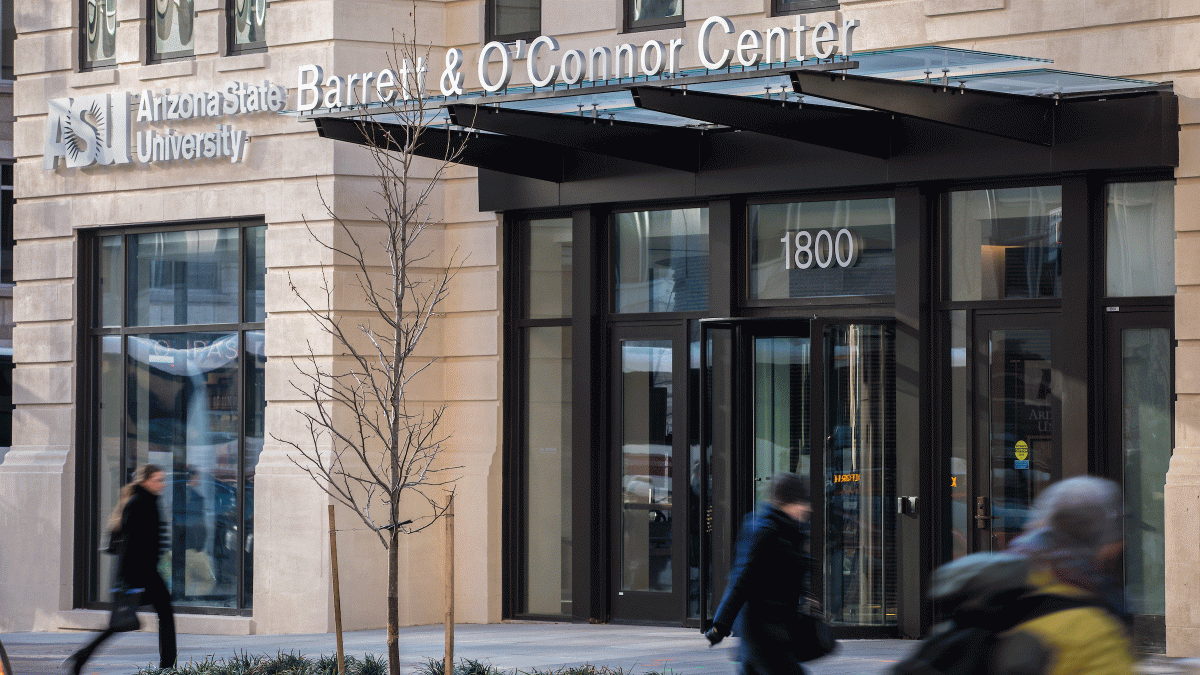Every year since 2004, Arizona State University has seen enrollment numbers go up in STEM disciplines, which is why the university is helping shape coast-to-coast conversations about science, technology, engineering and math (STEM) learning inside and outside the classroom, especially in major museums.
On Feb. 26, ASU’s Consortium for Science, Policy, and Outcomes co-sponsored an event with the Association of Science and Technology Centers (ASTC) at ASU’s Barbara Barrett and Sandra Day O’Connor Washington Center to talk about the opportunities for informal STEM learning outside of a traditional classroom.
The event immediately followed ASTC’s Museum Advocacy Day, when advocates for museums and science centers met with legislators on Capitol Hill to convince lawmakers to increase funding for museums and other public spaces that support lifelong STEM education.
Jason Lloyd, assistant director for programs at the consortium and managing editor for Issues in Science and Technology, discussed how ASU is determined to discover new ways to make science more accessible and more democratic.
“One way we do these things is by finding and sharing some of the most compelling ideas for reforming science policy and the practice of research and innovation,” Lloyd said. “Another way is by collaborating with federal agencies, universities, science centers and think tanks to develop various methods of involving citizens in decision-making around a range of important science and technology issues.”
The day consisted of two panels of representatives from various government agencies explaining grant opportunities for organizations to help with opportunities for informal STEM education. These opportunities come at a time when STEM education advocates believe that informal education opportunities will overwhelmingly help people of all ages improve their knowledge in science and technology subjects, and funding from federal agencies would be a significant demonstration of government support for STEM education.
“As a whole, the community is really trying to push the bounds of public engagement in science across the full range of scientific topics,” said Adam Fagan, director of communications and advocacy at ASTC. “We wanted to engage some of the federal partners that have traditionally been close partners with the museum communities as well as extend to other mission-driven agencies whose topics have a need for public engagement.”
Carrie McDougall, senior program manager in the Office of Education at the National Oceanic and Atmospheric Association, explained how NOAA and other federal agencies fought for informal education language to be included in the America COMPETES Act, legislation aimed at strengthening STEM education in the U.S. She expressed how critical it is that ASTC, the Consortium for Science, Policy, and Outcomes, and other stakeholders continue this important fight.
“We strongly advocated for informal education being called out explicitly, and it was a fight, so your work is never done,” McDougall said. “You always have to be out there positioning informal education as a key component of a larger STEM education ecosystem.”
More Science and technology

ASU author puts the fun in preparing for the apocalypse
The idea of an apocalypse was once only the stuff of science fiction — like in “Dawn of the Dead” or “I Am Legend.” However…

Meet student researchers solving real-world challenges
Developing sustainable solar energy solutions, deploying fungi to support soils affected by wildfire, making space education more…

Miss Arizona, computer science major wants to inspire children to combine code and creativity
Editor’s note: This story is part of a series of profiles of notable spring 2024 graduates. “It’s bittersweet.” That’s how…
